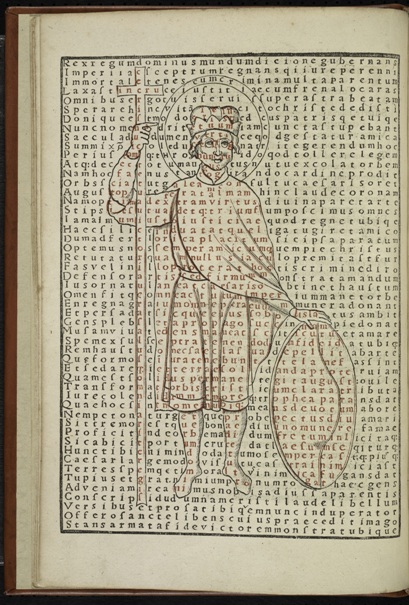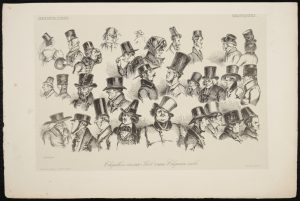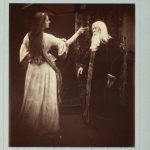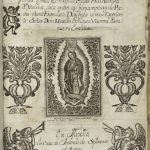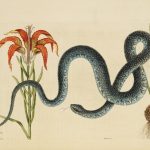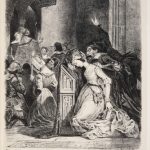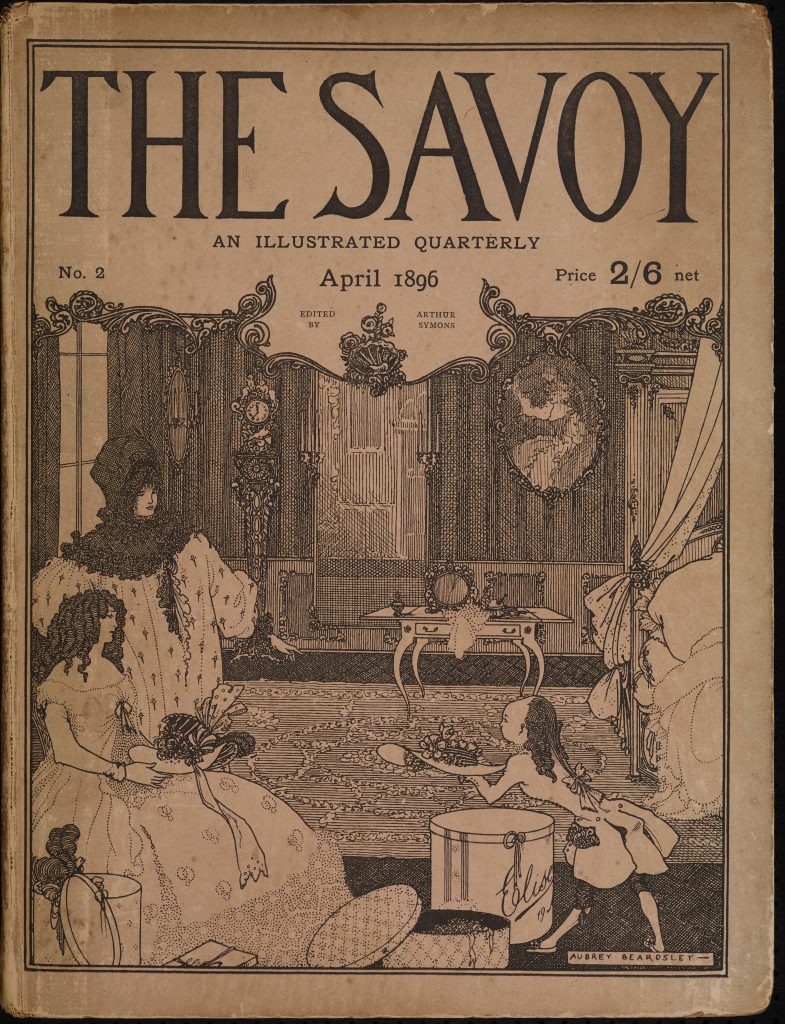
The eight issues that comprise the full print run of The Savoy magazine are part of the RBC’s William Butler Yeats Collection. Yeats contributed poems, stories, and essays to the short-lived periodical, prompted by his friendship with the magazine’s editor, Arthur Symons. Through his association with The Savoy and with Symons, Yeats developed an interest in the Symbolist poetry of Paul Verlaine, Stéphane Mallarmé, and others—a connection sometimes overlooked in evaluating Yeats’s long career as a poet.
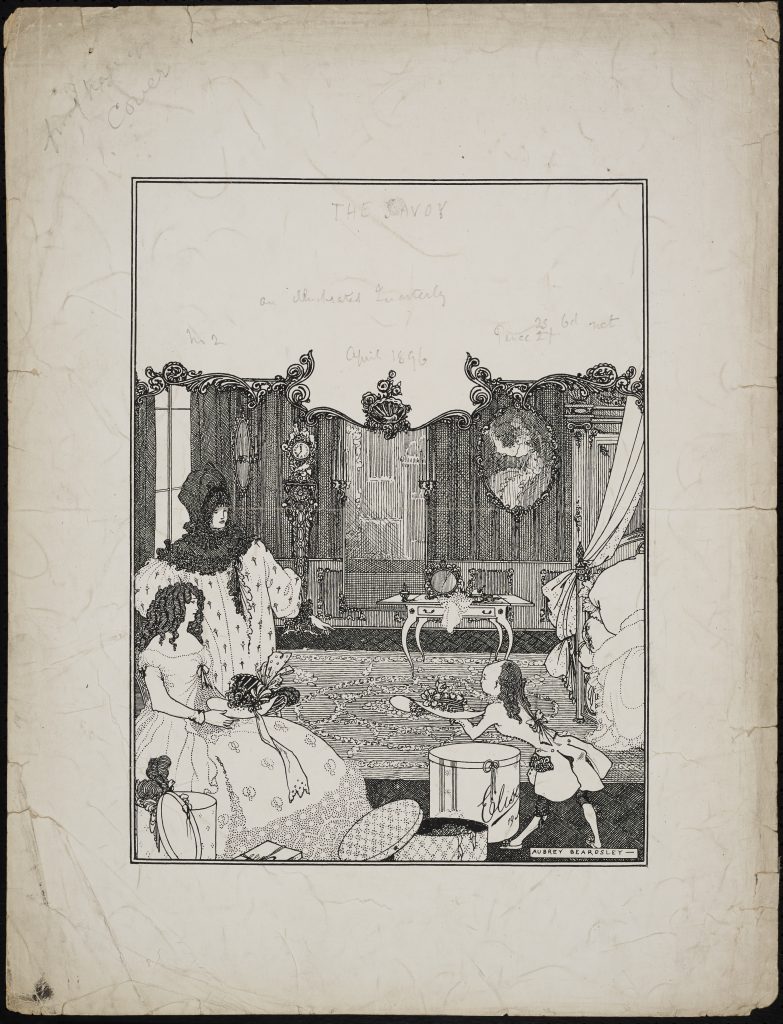
The Savoy made its debut in 1896, a transitional moment in British letters when the aesthetically driven Decadent movement rebranded itself as the avant-garde Symbolist movement. Symons, a jobbing writer remembered now mostly for his literary criticism, provides an explicit link between decadence and Symbolism: in 1893, before his work on The Savoy, Symons authored a manifesto “The Decadent Movement in Literature,” defining the key features and leading writers of “art for art’s sake”; in 1899, two years after the close of The Savoy, Symons expanded the essay to a book-length work, retitling it The Symbolist Movement in Literature.

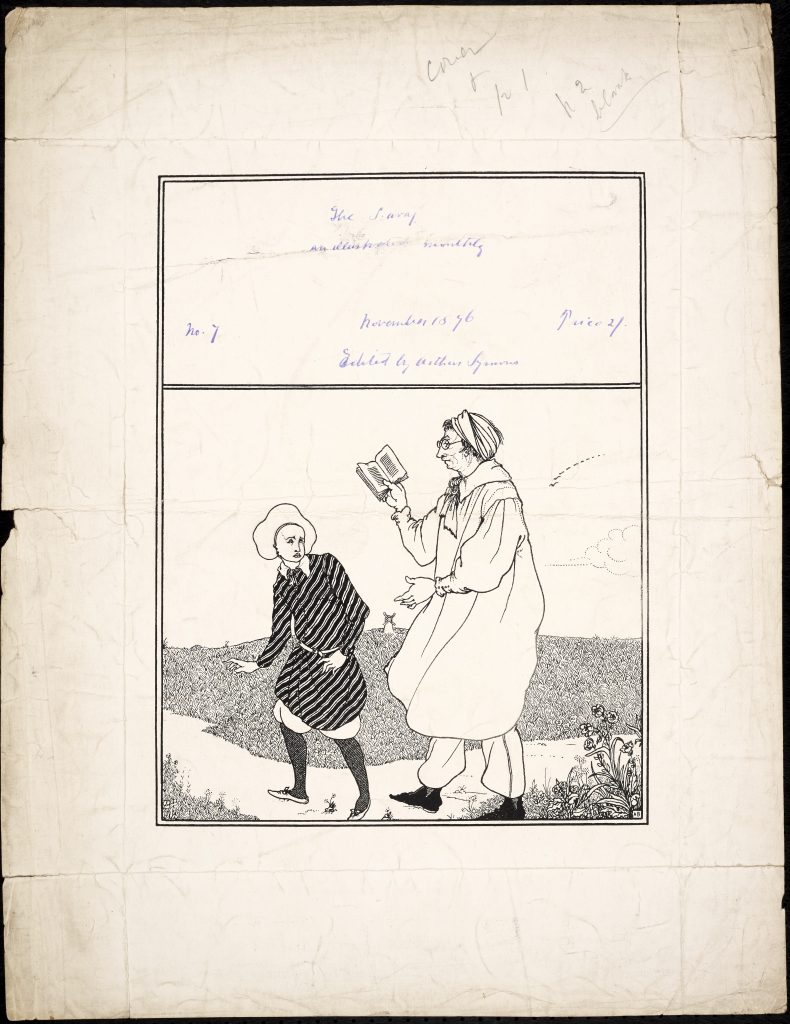
Symons’s partner in shaping the aesthetic and artistic parameters of The Savoy was illustrator Aubrey Beardsley. Beardsley had previously worked as art editor and designer for Elkin Mathews and John Lane’s The Yellow Book—to which Symons also contributed—but he was asked to resign after Oscar Wilde’s conviction for gross indecency colored Beardsley’s past association with Wilde as scandalous. Mathews and Lane’s squeamishness was not shared by the publisher of The Savoy, Leonard Smithers. Smithers, whose publishing ventures included erotic texts as well as literature, encouraged Beardsley and Symons’s artistic productions.
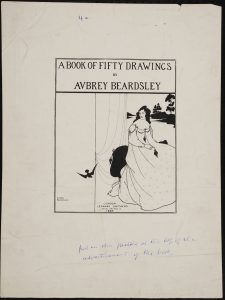
In addition to the full print run of The Savoy, the RBC holds printing proofs of Beardsley’s designs for The Savoy, annotated with Smithers’s notes on production. These proofs have appeared previously on the RBC blog, following a lecture by collector Mark Samuels Lasner that discussed their status as true proofs—not later reproductions of Beardsley’s artwork.
While Beardsley’s designs for The Yellow Book had featured bold contrasts of white and black, for The Savoy Beardsley developed a style incorporating the use of texture and fine detail. Beardsley’s cover art, in particular, reflects the richer designs of his illustrations for The Rape of the Lock and Lysistrata. Beardsley’s drawings, prized now for their artistic excellence, are often reproduced divorced from their original contexts; the RBC’s proofs of Beardsley’s designs for The Savoy remind us that Beardsley was a working artist, and above all an illustrator of texts.
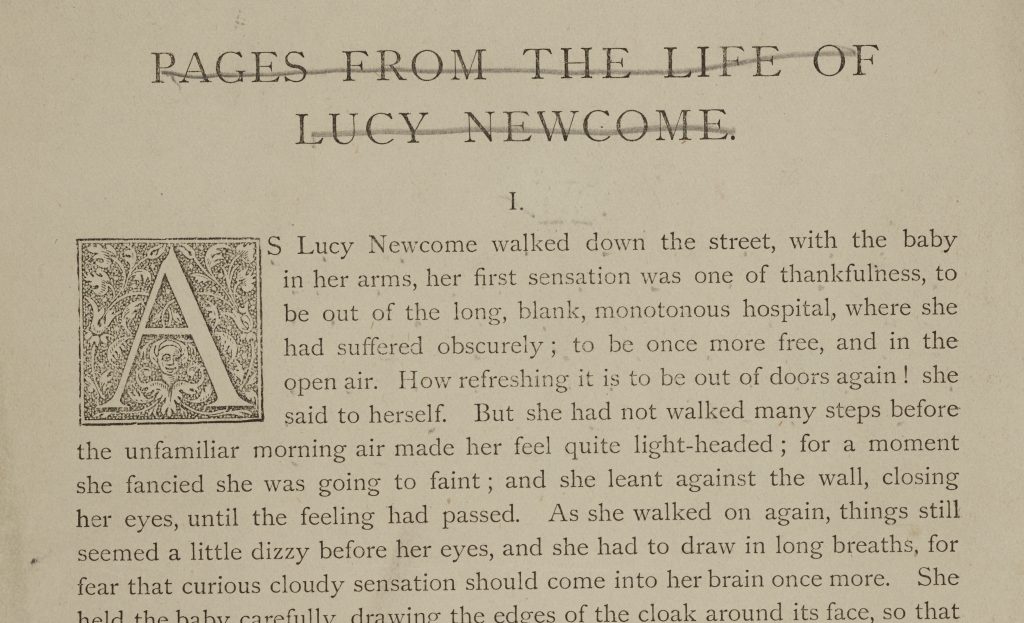
In addition to the proofs of Beardsley’s drawings, the RBC also holds three drafts written by Arthur Symons related to the short story “The Childhood of Lucy Newcombe,” which appeared in the final number of The Savoy. Symons wrote three stories about Lucy Newcombe, a fictionalized character drawn from the life of Edith Catherine Robichaud: born Edith Catherine Broadbent; called Ryllis Llewellyn Hacon during her first marriage.
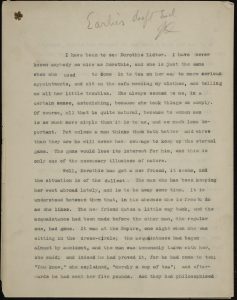
Robichaud, an artist’s model and escort under the names “Amaryllis” and “Muriel,” was Symons’s mistress. Her past, steeped in mystery and intrigue, becomes in Symons’s stories a psychological character study. Symons planned to turn the series into a novel, a project he clung to even after the close of the magazine. Symons wrote to novelist Thomas Hardy for advice on the novel, citing Jude the Obscure as one of his influences, but Hardy discouraged Symons from seeking a publisher. Hardy warned Symons that his risqué choice of a sex worker for a protagonist would ruin his reputation.
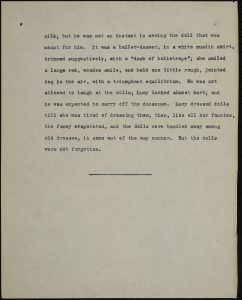
Despite her scandalous past, the real Lucy Newcombe went on to become an incredibly successful society matron: she married William Llewellyn Hacon, became a great patron of the arts, and joined the women’s suffrage movement. Even after ending her career as an artist’s model, Robichaud sat for several prominent painters, including Charles Condor, whose 1896 painting of Robichaud “The Shore at Dornach, Highlands” hangs in the Aberdeen Art Gallery & Museum.

